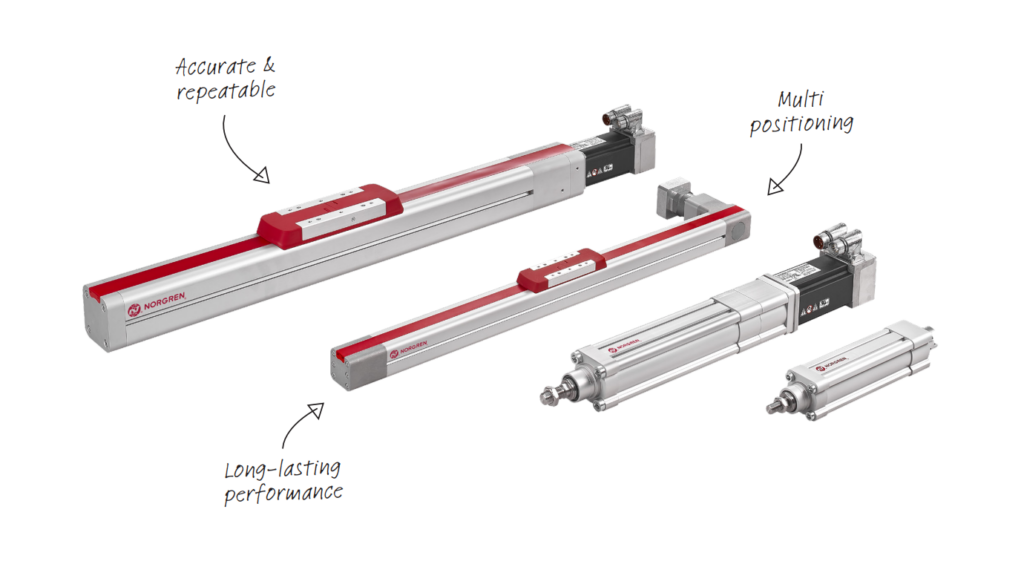10 Advantages of Electric Actuators
An actuator is a part of a machine or device that enables movement by converting some form of energy into mechanical force with the push of a button. There are various kinds, but the most popular are the hydraulic types which use incompressible liquid as energy. Electric linear actuators have been gaining more traction recently because of their benefits compared to other choices.
Electric linear actuators produce mechanical force by using the rotational motion of an AC or DC motor. They’re present in most machines in your everyday life like your washing machine and standing desk. Usually, larger-scale applications can be seen in the automotive industry. They’re installed in cars and major machine parts used to manufacture vehicles.
So, what are its advantages that made more engineers and business owners start to use this type of technology more? Here’s a quick rundown of some of them:
1. Straightforward Design
One of the most important benefits of an electric linear actuator is its simple design. A system consists of a DC or AC motor, a series of gears, and a lead screw with a driving nut that pushes a rod shaft in and out.
Meanwhile, hydraulic and pneumatic systems have more complex designs. They always come with more parts, including pumps and hoses.
2. Faster Assembly Time
Putting everything together would be easier since you won’t have to deal with pumps and hoses. Installing this only requires simple wiring. The simplified assembly process means faster integration into the entire ecosystem of the facility. This also reduces labor costs due to the amount of time saved.
3. Smaller Footprint
An electric linear actuator is a self-contained unit mounted where the motion is required, which is then connected to the system controller with a small cable. Unlike its counterparts, it doesn’t need much space to function efficiently. This gives people more flexibility when incorporating the actuator into the area.
On the other hand, a hydraulic actuator system of the same capabilities would usually need more because it comes with more parts. The primary actuator needs to be connected through hoses to a reservoir equipped with a motor. Allotting space for these units would require careful planning, especially for those who have smaller facilities.
4. Easy Integration
Apart from letting you easily install it in a facility with ease, an electric linear actuator can also be integrated with other systems and equipment with no trouble at all. Programming the commands to the controllers that manage the facility’s machines is less complicated than doing it with a hydraulic or pneumatic system.

5. Precision and Control
An electric linear actuator provides a higher level of control throughout the entire process. With just a few keystrokes on the controller, the operator fully controls the piston’s position and applied force.
Other actuators can’t replicate the same level of accuracy and control. For example, a hydraulic system would usually suffer from a ‘stick slip.’ It’s where the main actuator jerks during the transition of moving and being still.
6. Safety
If a well-trained operator has complete control, the likelihood of an accident is slim, but it’s always best to have safety precautions. This is where electric linear actuators shine. Most of these actuators come with limit switches. They’re designed to send a signal to the drive to stop the motion when it reaches full extension and retraction. Limit switches help prevent the machine from stalling after it reaches its limit. If it stalls, the motors will keep going until they break down and burn.
7. Eco-Friendliness
Electric linear actuators only use electricity as a source of energy, nothing else. It’s clean and doesn’t produce any by-products during use, so the healthcare and medical industries prefer this variant because it can’t contaminate anything.
Hydraulic systems have high-pressure fluids flowing through hoses, which must be properly maintained. If one part gets damaged, the leak can contaminate products or the facility itself.
Meanwhile, pneumatic actuators have compressed air that can blow contaminants into the environment.
8. Quiet Motor
Noise pollution is also a factor to consider when looking for actuators. Hydraulic systems may bring in more power, but it’s also louder because of their high horsepower motors. It’s the main reason many refer to them as “bang-bang” devices because of the noise they make when in use.
Electric actuators use silent electrical motors.
9. Low Maintenance
This type of actuator has advanced to the point where it’s virtually maintenance-free. Because it has fewer components, it has fewer points of failure. And its parts are easier to troubleshoot and repair or replace since most of them are just wires and gear systems.
Those who have hydraulic setups need to constantly check their systems to prevent the risk of leaks and contamination. Fluids also need to be regularly replaced to ensure a smooth operation.
10. Cost-Effectiveness
Another advantage of having an electric linear actuator is the savings you can get from it.
All the other benefits add up when talking about its cost-effectiveness.
Since this kind of actuator doesn’t have a lot of components, owners don’t have to stock up on a lot of spare parts. It lets you cut back on labor costs, too, since it’s easier to install, operate, and maintain. Lastly, you won’t have to spend much energy as it consumes less power than others.
With the advancement of technology, electric linear actuators can now come in different sizes. But all of them are essentially the same device with a motor, gears, and leadscrew. All that changes is the size of the motor inside.
This is how many industries can utilize this device in some form or another. Some integrate it into products like lift desks, while others use it for heavy machinery and manufacturing. Whatever electric linear actuators are for, they will provide the maximum flexibility for any application. To get to know more about electric actuators, reach out to our team.
